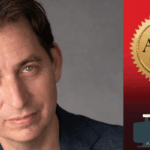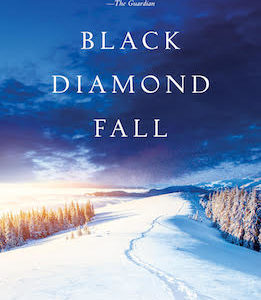The three little girls scrunched themselves together on the couch the way that kids like to do—arms and legs looped and tangled and scrambled in such acrobatic disarray that it was hard to tell where one girl ended and her sister began. There was a lot of “Hey!” and “You’re kicking me!’ and “Stop it!” and “Move over!” All of it was good-natured, and all of it was marinated in giggles and squeals.
Three little girls, ages eight, 11, and 12.
I’ve thought about them often in the months since I met them in their grandmother’s home outside Huntington, West Virginia. I never knew their mother, but I knew her story: She died of a heroin overdose on the streets of this Ohio River town before her twenty-fifth birthday.
Their grandmother, a friend of a friend, takes care of them now. She invited me over to meet the girls. I don’t live in Huntington anymore but I was born and raised there, and most of my novels are set in West Virginia. I wanted to see the effects of the opioid epidemic from the inside—because, frankly, I’ve seen enough from the outside.
In 2017, the Centers for Disease Control and Prevention just announced, the number topped out at around 72,000, a ten percent increase over the year before.I’ve read plenty of searing journalistic accounts of the terrible toll this unprecedented medical, sociological, and spiritual catastrophe has taken on the nation, but especially on Appalachia. I’ve shaken my head at the stunning rise in the number of overdose deaths; in 2017, the Centers for Disease Control and Prevention just announced, the number topped out at around 72,000, a ten percent increase over the year before. (In West Virginia, the increase was 17 percent.) I’ve worried about the fate of the foster care system, under siege now as the children of addicts overwhelm the available resources. And I’ve joined in the general sense of helplessness in the face of a crisis that is hollowing out these mountains more efficiently than strip mining ever did.
I’d come back to Huntington this time because I needed to know where things stood—six years after the publication of A Killing in the Hills. That was the first book in my crime fiction series chronicling the grievous impact of the opioid addiction epidemic on this land I know and love. On August 21, the seventh novel in the series, Bone on Bone, was published.
As I was writing Bone on Bone, I had begun to ask myself with increasing urgency: Does writing about something ever make a difference?
In one of my favorite films, The Year of Living Dangerously (1982), based on Christopher Koch’s 1978 novel, the unlikely social activist Billy Kwan (magnificently played by Linda Hunt) asks a fierce, plangent question: “What then must we do?” That question has resonated for centuries. It shows up in the bible (Luke 3:10) and was used as a title by Tolstoy for his non-fiction account of the suffering he saw all around him.
And here it was again, as I contemplated literature’s responsibility in the wake of a devastating epidemic.
This time, instead of talking mostly to public officials or addicts themselves, I wanted to check in with mothers and fathers and grandmothers and grandfathers. I wanted to speak with sisters and brothers and uncles and cousins. I wanted to talk to the people for whom this crisis is a part of their daily reality.
I wanted to talk to these three little girls, whose memories of their mother are complicated and shadowy—and yet sometimes painfully vivid. Too vivid. They loved their mother. They will always love their mother. But loving someone, and forgiving her, isn’t the same thing at all.
In the years since I left Huntington for graduate school in Columbus and then a journalism career in Chicago, my hometown went from a quiet river city to a drug-saturated place of high crime and low hope.In the years since I left Huntington for graduate school in Columbus and then a journalism career in Chicago, my hometown went from a quiet river city to a drug-saturated place of high crime and low hope. Back in 2012, when I first became aware of this tragic transformation, I was struck by its promise as a theme for a crime fiction series. In A Killing in the Hills, a character named Belfa Elkins returns to her Appalachian hometown determined to fight the drug-induced despair that has taken dark root there.
I’m no saint—you’ll get no argument about that from the people who know me—and I don’t claim to be, but I believe to my core that every writer wants to do more than just describe reality. In the slew of recent memoirs of addiction, such as Sarah Hepola’s Blackout (2015), I’ve never gotten the sense that the authors are being deliberately gratuitous about the psychological hell they depict. They’re aiming higher. Writers—and readers—want literature to do more than simply beguile and entertain.
The hope goes like this: We come across a great work—a powerful novel, a touching poem, an elegant memoir, an incisive piece of reportage—about a heretofore obscure social problem. We’re stunned. We’re rattled. Our world is officially rocked. Newly enlightened, we spring into action to solve the problem.
We all know the anecdotes, those highly satisfying cause-and-effect scenarios: By writing Uncle Tom’s Cabin (1852) and exposing the ghastly inhumanity of slavery, Harriet Beecher Stowe lit the fuse that led to the Civil War. (A charming—but never proven—yarn claims that President Lincoln, upon meeting the demure author, declared, “So you’re the little woman that wrote the book that started this big war.”) John Steinbeck dramatized the soul-pummeling evil of unchecked bank power in a time of financial crisis in The Grapes of Wrath (1939). The Handmaid’s Tale (1985) by Margaret Atwood illustrated the perils of misogyny and male privilege, giving feminism a boost. Censorship took it on the chin in Ray Bradbury’s Fahrenheit 451 (1953). And 1984 (1949) by George Orwell is still the go-to novel to remind readers of what happens when totalitarianism twists reality. Just the other night, I heard a commentator on MSNBC say that she was re-reading it as a way of dealing with the Trump administration.
Can books really do that? Can stories function as, in effect, community organizers? W. H. Auden’s famous caution that “poetry makes nothing happen” is not nearly as satisfying an idea as the one that maintains that words, passionately felt and artfully arranged, can save the world.
So can they?
The good that literature does is a subtle kind of good. A subterranean kind of good. There’s nothing evidence-based about this kind of good.As I talked to those three little girls that night, asking them about the things they like to do—swimming and riding a hoverboard were high on the list—and their hopes for their lives, I came up with an answer. That answer is: Maybe. And “maybe” has to be enough. Because the good that literature does is a subtle kind of good. A subterranean kind of good. There’s nothing evidence-based about this kind of good. It’s not tangible or definitive. It’s not supposed to be. Other things are tasked with that—things such as clinics and libraries and schools and jobs. Literature’s unique role is to demonstrate that we’re not limited to the stubborn ugliness of only one kind of reality. If we can create people who never existed and events that never happened, then we can someday make a world other than the broken one that lies before us.
To survive, Arthur Miller wrote, human beings need “food, sex, and an image.” The image part is where writers come in—writers in general, and crime writers in particular, because crime writing specializes in extremities of awfulness. It lives in the place where the very worst has already happened and just keeps on happening. If words can work their dirty magic there, they can work it anywhere.
In Bone on Bone, I continued my story of a character who, despite being damaged by her own violent childhood, returned to West Virginia ready to do battle. Her opponent is what I call in my books the “Appalachian virus”: addiction. Her world is filled with users and dealers, with prostitutes and pimps, with petty thieves and stone-cold murderers. These are the sorts of people about whom Nelson Algren wrote in his novel about a drug-addicted Chicago gambler, The Man with the Golden Arm (1949): “And yet they spoke and yet they laughed; and even the most maimed wreck of them all held, like a pennant in that drifting light, some frayed remnant of laughter from unfrayed years.”
If we’re not cops or prosecutors or presidents or doctors or social workers or therapists—if we are, alas, just writers—what then must we do? This, I think: We must look for the pennant in the drifting light, and then tell the story of the haunted soul who’s holding it.

















